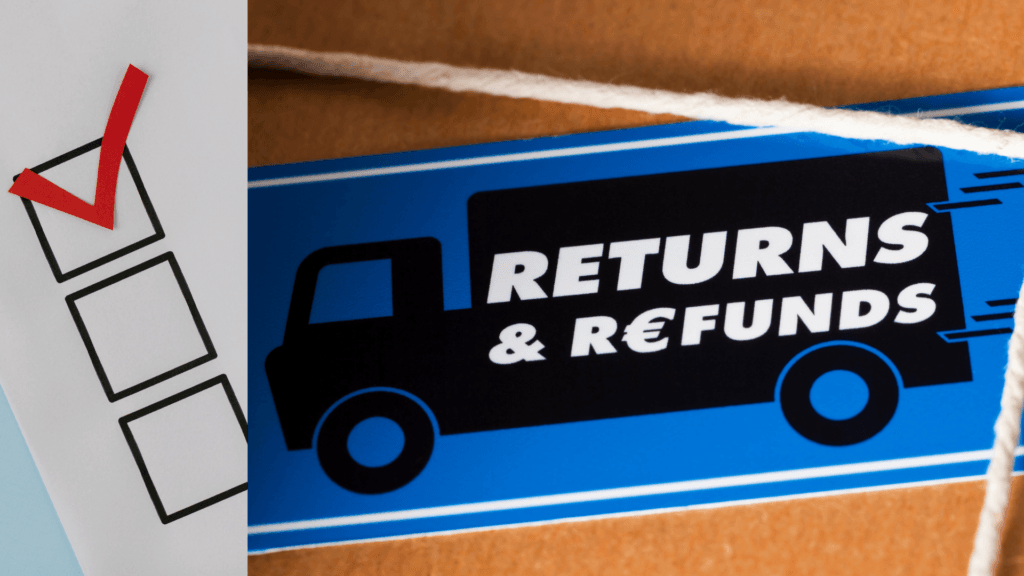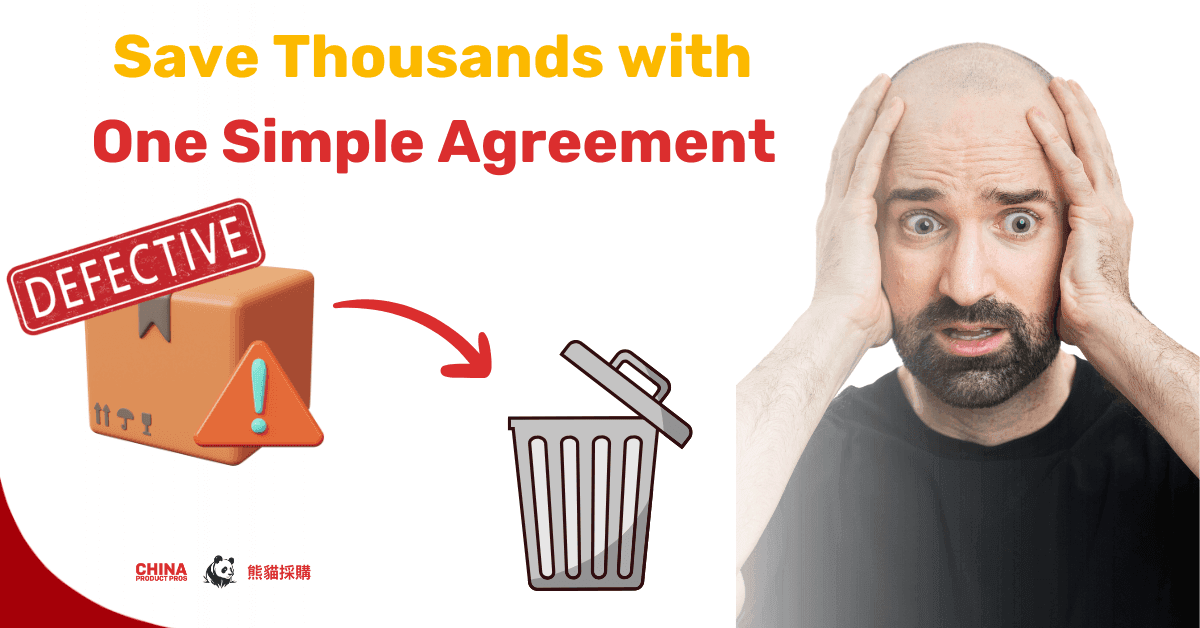Do you like saving money? Me too. Here’s a simple strategy to almost instantly recover 1-2% of your landed cost of goods. For most brands, this can mean thousands of dollars back in your pocket.
Buying products from China can help your business save money, but you’ll likely face some product issues. On average, you should expect a 1-2% or possibly higher defect rate, regardless of the product or supplier. How you handle these defects can make or break your customer satisfaction, supply chain efficiency, and profitability—especially on platforms like Amazon, where reviews and metrics matter.
The cornerstone of managing these challenges effectively is a supplier returns agreement. This simple yet powerful agreement ensures your supplier compensates you for factory defects with additional units on future orders. It’s low effort, high impact, and standard practice among savvy importers.
Let’s dive into why this agreement is important, how to implement it, and how it streamlines the returns process.
Table of Contents:
- What Is a Supplier Returns Agreement?
- When to Set Up a Returns Agreement
- How to Set Up a Returns Agreement
- Don’t Forget Your Pre-shipment Inspections
- Why a Returns Agreement Benefits Both Sides
- Start Making Your 1-2% Difference Today
What is a supplier returns agreement?

Xiaofeng and the team meeting with a supplier in China
A supplier returns agreement is an upfront negotiation with your supplier to define how factory defects will be addressed. The most usual agreement is having your supplier compensate you for defective products by including extra units on future purchase orders.
Why this works:
- Suppliers prefer providing extra units over refunds, as it aligns with their production cycles.
- It motivates suppliers to maintain better quality control to minimize their losses.
- It provides a simple solution for you, reducing back-and-forth negotiations and delays.
This agreement benefits both parties. You avoid the hassle and cost of returns, while the supplier can manage defects efficiently without disrupting cash flow.
When to set up a returns agreement

The best time to set up this agreement is after your first order and before the second. By then:
- You’ve established a working relationship with your supplier.
- You have baseline data on defect rates and quality issues.
- You can approach this as a normal business request, not as a sign of mistrust.
Or if you’re way past that point then the second best time is now.
Suppliers often have similar agreements with other brands. If you’re not asking, you’re likely leaving 1-2% or more of your cost of goods sold (COGS) on the table every year. For a few hours of work, this is low-hanging fruit that adds directly to your bottom line.
How to set up a returns agreement

Here’s how to implement a supplier returns agreement step by step:
- Audit Your First Order
Use a third-party inspection service (like ours) to document the quality of your first order. This report will show defect rates and recurring issues, giving you evidence to discuss with your supplier.
- Identify Defect Trends
Group feedback from the inspection report instead of flagging every minor issue. This avoids overwhelming the supplier and prevents a communication breakdown.
- Approach the Supplier Professionally
Frame the returns agreement as a standard business practice. Suppliers are familiar with this request and won’t see it as confrontational.
- Draft the Agreement
The agreement should include:
- Compensation for defective products in the form of extra units on future orders.
- A process for handling exceptions or disputes.
- Use a Sample Email to Initiate the Conversation
Here’s a template you can use (edit as you see fit):
Subject: Proposal for Returns Agreement
Dear [Supplier Name],
I hope this email finds you well. After reviewing the quality of our first order together, I’m very happy with the overall collaboration and product quality. To ensure a smooth process for our ongoing partnership, I’d like to discuss a returns agreement.
This would help us both handle any factory defects efficiently while minimizing disruptions. The agreement would outline that any manufacturing defective units are to be credited as additional units on future orders. This is a common practice among our other partners and allows for ongoing improvement and transparency.
Please let me know a time to discuss further or feel free to share any thoughts on how we can implement this. Looking forward to continuing our great work together.
Best regards,
[Your Name]
[Your Company]
Don’t forget your pre-shipment inspections

Xiaofeng and Susie inspecting a factory in China.
If we are talking about managing quality defects, you absolutely want to get a pre-shipment inspection conducted with every single order—even after establishing a returns agreement.
Why pre-shipment inspections are important:
- Leverage: You still hold the balance payment, giving you negotiating power if issues arise.
- Prevention: It’s far easier to address problems at the factory than after the goods have shipped.
- Consistency: Ensures that the products match approved samples and quality standards.
Our inspection service (or any reliable third party) will:
- Conduct a detailed review of your products.
- Provide a report with photos, videos, and a checklist of any defects or concerns.
- Flag potential issues to prevent surprises down the line.
This report not only helps catch issues early but also builds a record for your supplier. Over time, this documentation helps optimize quality and reduces defect rates.
Why a returns agreement benefits both sides

A well-structured returns agreement isn’t just about protecting your business—it benefits your supplier too.
For the Brand:
- Reduces return rates and increases customer satisfaction.
- Saves time and money by avoiding disputes and lengthy negotiations.
- Recoups 1-2%+ of your COGS annually—directly boosting profitability.
For the Supplier:
- Simplifies their process for handling defects.
- Avoids financial strain from issuing refunds.
- Encourages long-term partnerships by aligning on quality expectations.
By formalizing the process, both parties can focus on growth and continuous improvement rather than reactive problem-solving.
Start making your 1-2% difference today

Xiaofeng and Susie meeting with an electronics factory in China.
Handling returns and defective products from China doesn’t have to be stressful. Taking a proactive approach with a supplier returns agreement makes the process easier and builds stronger business relationships. Pair this with pre-shipment inspections and clear documentation to keep things running smoothly and maintain product quality.
You could save 1-2% of your costs every year by making this effort. For example, if your brand generates $1,000,000 in revenue annually and your cost of goods sold (COGS) is 30% ($300,000), recovering 2% of that would save you $6,000. It’s a simple and effective way to improve your operations and pocket the savings.


0 Comments